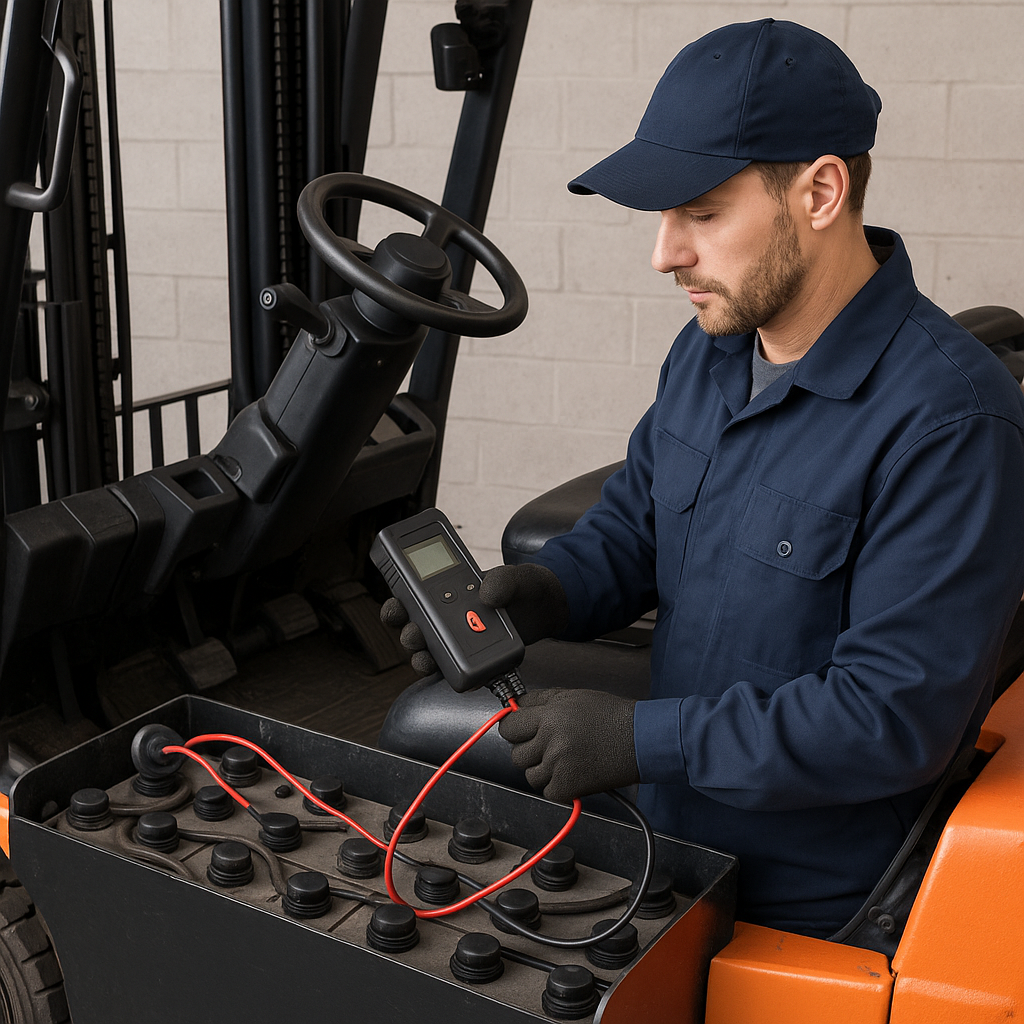HOW TO CHECK THE CAPACITY OF A LEAD-ACID BATTERY FOR A FORKLIFT
To check the capacity of a lead-acid battery (lead-acid accumulator) in a forklift, you can follow these methods:
🔋 1. Voltage Test
Tool: Multimeter
Steps:
-
Set the multimeter to DC voltage mode.
-
Measure the voltage between the positive (+) and negative (–) terminals of the battery.
Reference for a 12V battery:
| Voltage (V) | Estimated Capacity |
|---|---|
| 12.7V | 100% |
| 12.4V | 75% |
| 12.2V | 50% |
| 12.0V | 25% |
| <11.8V | Very weak, needs charging |
Note: Voltage gives a temporary reflection of capacity. If the battery was just charged or used, wait 2–3 hours for more accurate results.
🔋 2. Specific Gravity Test (Hydrometer Test)
Tool: Hydrometer
Steps:
-
Open the cap of each battery cell (for flooded batteries, not sealed types).
-
Draw a small amount of electrolyte and measure specific gravity.
Reference values:
| Specific Gravity (SG) | Battery Condition |
|---|---|
| 1.265+ | 100% (full) |
| 1.225 | ~75% |
| 1.190 | ~50% |
| 1.155 | ~25% |
| <1.120 | Empty, needs charging |
Each cell should show similar values. A major deviation could indicate a faulty cell.
🔋 3. Load Test
Tool: Specialized battery load tester
Steps:
-
Connect the device to the battery.
-
Apply load and monitor voltage drop.
Result:
If voltage drops too fast or too low, the battery might be weak or damaged.
🔋 4. Using Specialized Equipment
Some brands provide advanced diagnostic tools (e.g., Midtronics, BDS, or from battery manufacturers) that show:
-
Remaining capacity (%)
-
Cold Cranking Amps (CCA)
-
Internal resistance
-
Cell condition
What kind of battery are you testing? Flooded or sealed? New or used? Let me know for more specific guidance.



